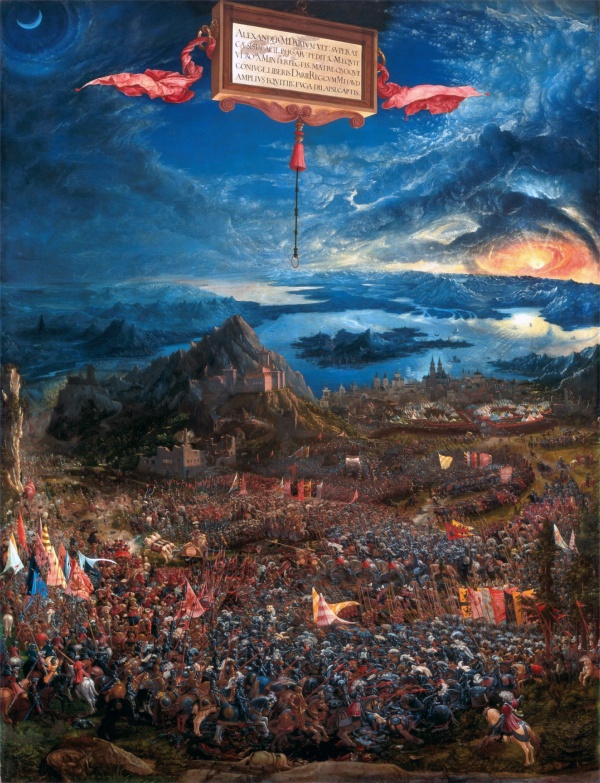Facts About The Battle of Alexander at Issus
"The Battle of Alexander at Issus" is a renowned oil painting created in 1529 by Albrecht Altdorfer. It vividly depicts the decisive victory of Alexander the Great over Darius III at the Battle of Issus in 333 BC. This artwork is celebrated as a masterwork of Renaissance landscape art and is part of the world landscape genre. Commissioned by Duke William IV of Bavaria, the painting was intended for his residence in Munich, and it now resides in the Alte Pinakothek art museum in Munich.
In this painting, Altdorfer captures Alexander the Great's exceptional military prowess, showcasing his conquests and the strategies he employed to defeat the Persian Empire. The artist's distinctive style, characterized by intricate landscapes and religious themes, is prominently displayed in this piece. The painting's composition, combined with its deliberate historical inaccuracies and symbolic elements—such as the sky and celestial bodies—adds layers of meaning. These elements suggest historical events, religious prophecies, and allegorical interpretations of the battle.
Altdorfer's innovative approach, which blends landscapes, anachronisms, and symbolism, has left a lasting impact on art history. "The Battle of Alexander at Issus" not only played a pivotal role in the Northern Renaissance but also influenced later art movements such as Romanticism and Expressionism. Recognized as Altdorfer's magnum opus, the painting's interplay of historical inaccuracy and artistic freedom continues to generate scholarly debate, contributing to its rich complexity and enduring significance.

 Netherlands
Netherlands